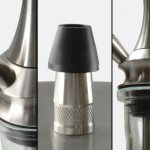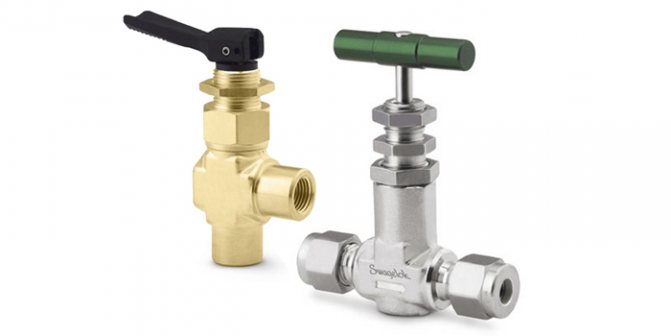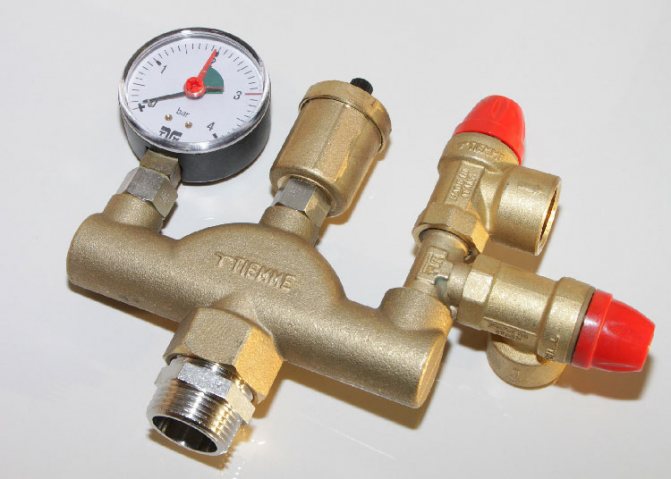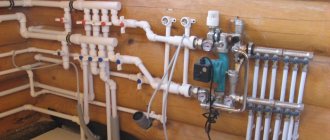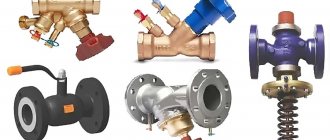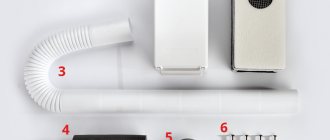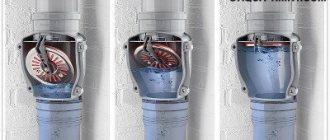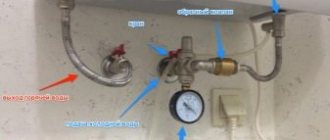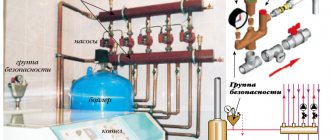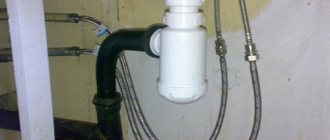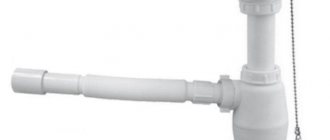Checking the tightness
Fluffy clouds of smoke, rich in flavor, this is exactly what many are looking for in a hookah. One of the steps in making a smoky hookah is to check the device for leaks. Leakage of excess air is most often formed at the junctions of the hookah parts. Poorly cut threads in production, not tightly twisted parts of the hookah during assembly, the absence of special seals at the joints of various parts, the absence of a ball in the valve, all this affects the tightness of the hookah. Finding the weak link among the many connections and making sure that the hookah is tight enough is very easy if you conduct a consistent hookah test.
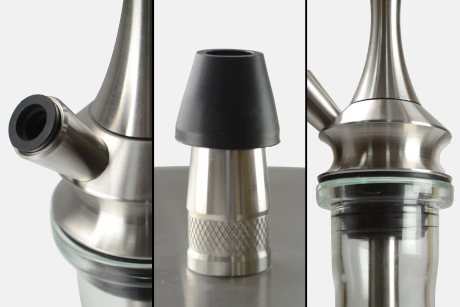
In the photo from left to right: seal for hose, cups, flasks
Advice: the tightness of the hookah is checked sequentially, starting separately from the hose to the complete assembly of the hookah.
It is very easy to carry out a complete leak test of a hookah. Even if you have never had to do this, then following the steps of this instruction should not be difficult.
The structure of different hookahs practically does not differ from each other. But if suddenly you have an unusual, designer, exclusive, high-tech, filderable heaped up hookah, which has an excellent shape of the hookah parts, from those presented in the photographs in the instructions. Or you have a portable hookah, which often lacks a shaft pipe, then just read this step in the instructions, without performing any actions, but gaining more knowledge.
Screw Bonnet Stainless Steel Needle Valves (JB Series)
BUYcatalogue
Threaded bonnet needle valves can be supplied with a regulating stem or check-tip stem, straight and angle configuration, and adjustable packing.
Characteristics:
| Operating pressure | up to 206 bar |
| Temperature | -40 to 315 ° C |
| Flow rate | Up to 0.58 |
| Material | |
| Body material | 316 stainless steel |
| Seal material | PTFE or Grafoil® |
| End connections | |
| A type | Swagelok Tube Fittings, NPT, ISO Male |
| The size | 1/8 to 3/8 inches; 6 and 8 mm |
First step. Hose
To check the tightness of the hose, you must first figure out what kind of hoses are. Based on the structure of the hose and how many parts it can be disassembled, you need to build a sequence of actions that will make it easy to determine where the hose has weak points.
All hookah hoses can be divided into two categories: one-piece and split.
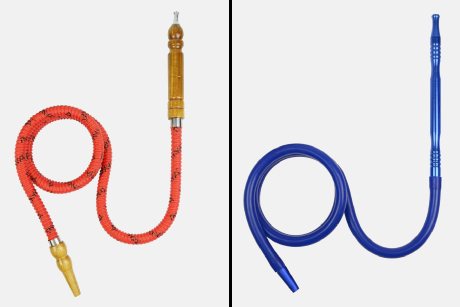

In the photo on the left One-piece hose, on right Composite (Collapsible)
The main difference between the two types of these hoses is their structure, the ability to be disassembled into several parts. Each type requires a different approach when testing for tightness. Therefore, you should start by determining which type of these two the hose belongs to, the tightness of which you want to check.
Features of the structure of one-piece hoses, popular problems and their solutions
With one-piece hoses, it is impossible to separate any part from each other. The mouthpiece and tip are fixed on both sides of the cord. Basically, these are easy-to-use, soft hoses that are easy to bend and twist easily. The internal structure of such hoses is different.
The most popular are hoses, consisting of a metal spring on which polyethylene is pulled from above, in order to protect other elements of the hose from water.To give rigidity to the spring, and to increase the service life of the hose, from above, the spring in polyethylene is covered with leather or leather with a deputy. Genuine leather hoses like this are popular in Arab countries. Well, for mass production in other countries, they use deputy leather. To keep the leather tightly, and not deform when folded, it is fixed on top with a nylon thread. It is wound over the skin of the deputy on a spring. When pulled, the thread tightly fixes the integrity of the hose along its entire length. At both ends, this entire structure is fixed with glue. On which the mouthpiece and tip are placed. And often, it is in these connection points, at hoses with a similar structure, that the weakest point is. Since such hoses are made mainly with the use of manual force, the human factor is inevitable here.
More reliable hoses also fall into this category. Outwardly, they are very similar to the previous hoses, but there is a significant difference in the internal structure. These are improved hoses in terms of practicality and durability. Under the dense leather, these hoses have a reliable tube of their rubber. These hoses are water resistant and can be washed. They have become more durable. Even if you accidentally step on or sit on such a hose, unlike a hose with a spring, this one does not deform.
Let's take a look at the most popular one-piece hose leakage problems and try to solve them together.
Problem: Puncture, Crack
Decision:
- - The easiest way is to pinch the damaged area in your fist while tightening the hookah
- - Cover the damaged area with electrical tape or tape
- - Wind up the nylon thread to the place of damage, patch it up by gluing a piece of leather of the deputy, and wind the thread back
- - In case of a strong crack, the rubber hose can be cut into two halves, at the crack, and connected with a piece of silicone hose by sticking them into the silicone hose on both sides
- - Seal the hole with chewing gum
- - Screw the tape onto the hose to the place of damage to the FUM
Problem: Spring deformation
Decision:
- - Try to get the spring back in shape. This can be done with the force of your fingers and hands, or by placing the hose in a vise
- - Continue to smoke until you purchase a new hose
Problem: Unevenly applied adhesive during production
Decision:
- - It is required to find a specific place for air passage and glue it carefully, dripping a small amount of glue onto the surface. Do not allow the glue to leak into the hose, otherwise, having solved one problem, another will appear.
- - Close up the pass point with "cold welding"
These were the most common problems with one-piece, non-separable hoses and possible solutions. After all, not for everyone, a popular solution is to buy a new hose, instead of the old one, with minor damage. Often, elimination of tightness problems is possible with the help of the simplest, available to everyone, improvised means. You just need to take a little time and have a little patience.
Now, having analyzed in detail the one-piece type of hoses, it is worth moving on to analyzing the problems with tightness to the next type, namely, composite, or, as it is also called, collapsible.
Composite hose type, features, problems and solutions
The compound hose is assembled from the hose tube, mouthpiece and adapter. All parts are detachable from each other and can be easily replaced. The base of the hose is a hose pipe, mainly made of silicone, rubber or plastic. The average length of the central part is usually 160 cm. The hose is completely symmetrical, therefore it has the same holes at both ends for attaching the mouthpiece and connector to it.
Mouthpieces are different in structure, and this is very closely related to the tightness of the hose as a whole. If the mouthpiece is made of one piece, then if a problem is found on this mouthpiece, it can be easily eliminated.The same cannot be said about a mouthpiece that can be disassembled into two or more parts. Basically, these are long mouthpieces that are connected by a thread. And such a junction can allow air to pass through. And, as you know, if such a small thread is damaged, its restoration, or other costly financial and time resources, make no sense. Therefore, the elimination of tightness problems using improvised methods, one way or another, will spoil the initial integrity of the product. Let's take a look at the problems that can be found when checking the tightness of the hose and their solutions.
Problem: Allows air to pass through the connection between hose and mouthpiece
Decision:
- - If the mouthpiece is freely inserted into the silicone hose, and just as freely pulled out of it, then you need to look if the opening of the silicone hose is stretched. This happens from the quality of the silicone, or from prolonged and frequent use. You can change sides of the hose, between the connector and the mouthpiece. Perhaps, on the other hand, the hose will hold the mouthpiece more tightly, and the connector does not need special tightness. Moreover, if the hose is reinforced with a spring. The second way is to cut 10 cm of the hose and stick the mouthpiece into the newly created hole.
- - If the mouthpiece is tightly held in the hose, and still passes, then it is possible that there are microcracks at the end of the hose, which are hardly noticeable to the eye. They can be detected with soap suds or by the sound of blowing forcefully from the other side of the hose. In this case, you need to shorten the hose by about 10 cm by cutting off its problematic part.
- - Tightly seal the junction with tape or electrical tape
- - Screw some FUM tape onto the connector of the mouthpiece, and then insert it into the silicone hose. This will enlarge the connector and make the connection even tighter.
Problem: Allows air to pass through the connection between hose and mouthpiece
Decision:
- - Here you need to act in exactly the same way as in the case described above, only from the other side
Problem: The hose itself allows air to pass through (puncture, crack)
Decision:
- Pull a small piece of another hose, slightly larger than the hose itself, over the damaged area. Due to the stretching characteristics, the upper silicone will tightly seal the damage on the main hose.
- Cover the damage with duct tape
- To melt the damaged place with a lighter or hot metal. At this point, a trace of deformation will remain on the hose, but the hose can still be used for a while.
Use your ingenuity and all possible methods when carrying out procedures to troubleshoot hose tightness problems. To identify these problems, follow the step-by-step instructions below.
Non-Rotating Stem Needle Valves (D Series)
BUYcatalogue
Characteristics:
| Operating pressure | Up to 206 bar |
| Temperature | -28 to 232 ° C |
| Flow rate | Up to 0.53 |
| Material | |
| Body material | 316 SST, Brass, Alloy 400 |
| O-ring material | Fluorocarbon FKM |
| End connections | |
| A type | Swagelok Tube Fittings NPT |
| The size | 1/8 to 3/8 inches; 6 mm |
Five easy steps to test a hose for leaks
It is convenient to check the tightness of the hose anywhere. It doesn't take much time and effort. This does not require special tools or knowledge. Everything is very simple. To verify this, follow the steps in the instructions and check the tightness of your hose.
To check the hose for leaks, you need:
- Take the hose
- Press your lips tightly against the hole and gently blow inward, gradually increasing the expiratory force
- On the other hand, tightly pinch the hole so that air cannot pass through it, while continuing to blow
- If the exhalation is blocked, and air does not come out of the hose anywhere, and no sounds similar to a whistle are heard, then the hose is completely sealed.
- If the hose did not release, or very slowly passed air when you blew into it without pinching the hole on the other side, then something inside the hose is interfering with the passage of air. Try to gently push the wire inside the hose to remove any obstacles. This can be excess glue, or an incompletely drilled metal tip of the mouthpiece. Or another production miscalculation. Also, something could get there in everyday life, during storage or during transportation, and clog the hose tunnel.
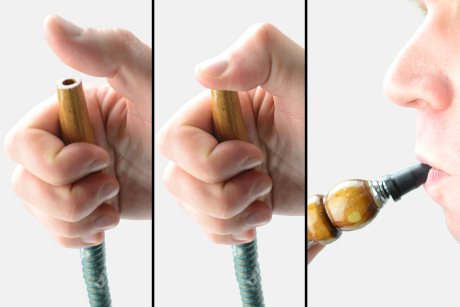

In the photo from left to right: We take the tip of the hose, Close the hole, Blow into the mouthpiece of the hose to check the tightness
Now that we have made sure that the hose is in good working order and tight, it is completely ready to use. And we move on to the next step, checking the hookah shaft.
Second step. Mine
Hookah shafts are solid and collapsible. In a solid shaft, only the disc is disconnected and the valve cover on the syphile is unscrewed. A collapsible shaft can be unwound into many parts. Therefore, before checking the tightness, you need to consistently go through all possible places where there are connections, and tighten or tighten them tightly. It is not necessary to tighten it very much, otherwise the thread will break off and the hookah will need repair.
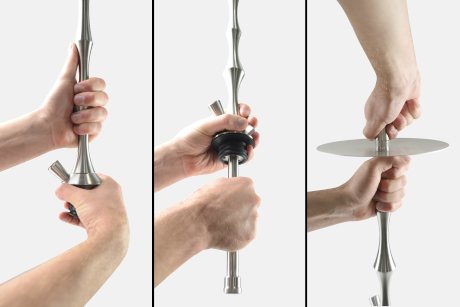

In the photo, the collection of the hookah shaft from left to right: We screw the upper pipe of the mine to the syphil, We screw in the lower tube, We fix the plate with an adapter for the cup
To check the mine for leaks, you need:
- Collect mine
- Check if everything is tightly screwed up
- Take the shaft with a plate up to your face and tightly squeezing the hole in the adapter for the cup with your lips, blow it into the shaft pipe, and press the hole in the tube (which sinks into the water) from below with your palm. If the tube has slots for easy inhalation (diffuser), then you need to close them by hiding the bottom of the tube in the cam.
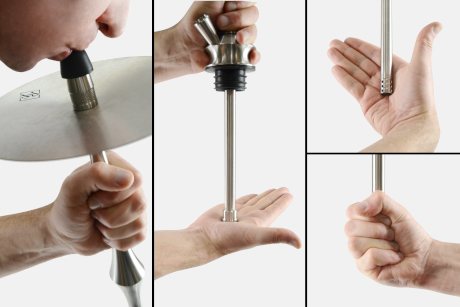

In the photo, the test for the tightness of the mine tunnel from left to right: We blow from above into the shaft pipe, Close the hole of the lower tube, If the lower tube has slots (diffuser), close all the holes, hiding them in a fist
If the air does not pass anywhere, then proceed to the next step, checking the tightness of the valve and the hose adapter.
Compact gauge valves
BUYcatalogue
Compact gauge valves with a purge function are easy to install and provide easy gauge maintenance: lighter and smaller than conventional gauge assemblies.
Characteristics:
| Operating pressure | Up to 275 bar |
| Temperature | -53 to 315 ° C |
| Material | |
| Body material | 316 stainless steel |
| O-ring material | Polyurethane foam |
| End connections | |
| A type | Swagelok Tube Fittings |
| The size | 1/2 inch; 12 mm |
Step three. Flask with shaft and hose
We continue to check the tightness of the hookah. Now you need to assemble the flask with the shaft and attach a hose to them. These connections can be:
- - through special rubber or silicone seals;
- - on lapping (i.e. glass to glass or metal to metal);
- - on a thread, or a lock (such connections as "click", "half-turn", "bearing", etc.)
Lapping, locking and threading connections are generally already sufficiently tight from the factory. They do not require additional intervention. But the connections on the seals require. For better tightness, it is recommended to use a ribbed seal on the flask, as they have several ribs that together make the connection tight. The main thing is to choose the seals in size. If necessary, an electrical tape or FUM tape can be screwed under the seal for a tighter connection.
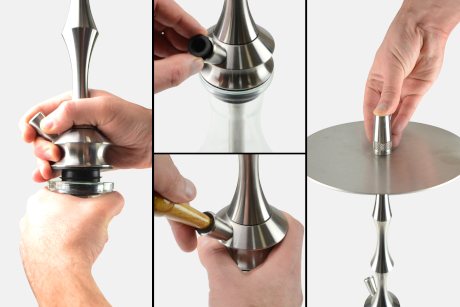

In the photo, assembling and checking the hookah from left to right: We insert the shaft into the flask through the seal, Insert the seal for the hose into the adapter for the hose, Insert the hose into the adapter, Close the hole of the adapter for the cup from above, Exhale and inhale the air through the hose to check the valve operation and tightness.
To check the tightness of the valve and the adapter for the hose, you need:
- Connect the flask to the shaft
- Insert the hose into the hose adapter
- Cover the top of the cup adapter tightly with your palm or finger
- Take the hose and exhale into it from yourself. Thus, we check the function of the outlet valve.
- When you exhale, air comes out through the valve. When inhaling, the valve closes and air does not pass.
- When you draw air in, you will feel a pull with your palm, in the place where you covered the hole. This means that both the valve and the adapter are completely sealed.
Be sure to check the presence of a ball in the valve. It is needed to purge the hookah. Used in the event of a tobacco fire to remove bitter smoke from the flask. It does not require interventions when smoking, you do not need to twist anything.
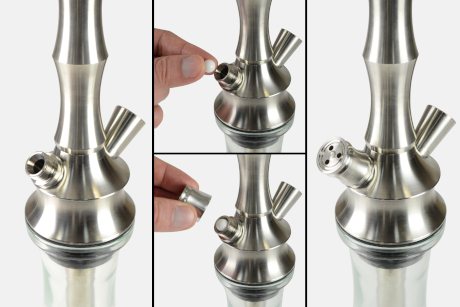

In the photo from left to right: Hookah shaft without valve, Put the ball in the valve adapter, Screw on the valve cover, Finished shaft with valve
We checked the valve and adapter, now we pass to the final stage - checking the tobacco cup.
Instrumentation Purge Valves (6DB Series)
BUYcatalogue
Characteristics:
| Operating pressure | Up to 413 bar |
| Temperature | -53 to 648 ° C |
| Flow rate | Up to 0.86 |
| Material | |
| Body material | 316 stainless steel |
| Seal material | Grafoil |
| End connections | |
| A type | Swagelok tube fittings, NPT, socket weld ends, VCR male fittings, VCO male fittings |
| The size | 1/4, 3/8, and 1/2 inches; 10 and 12 mm |
Fourth step. Complete assembly of hookah with a cup
At this stage, it is required to check the tightness of the connection between the cup and the shaft. This is one of the most difficult hookah connections, although it doesn't seem at first glance. Air leaks in this place can quite strongly affect the fluffiness of the smoke in the hookah. Therefore, if a silicone cup is used, then basically it does not require a sealant, it is soft in itself and is well fixed on the shaft. And for earthenware, ceramic, glass, metal and other cups made of hard materials, a special gasket is required for a snug fit.
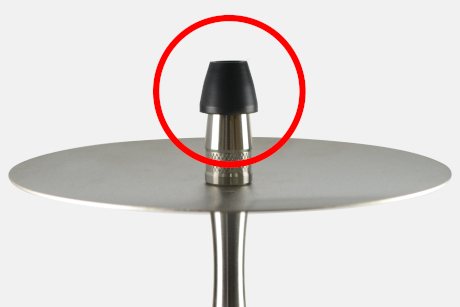

On the picture: Cup seal
If something happened to the sealant, it is torn, lost or does not fit the new cup, then you can use other similar things: paper napkins, FUM tape, foil, electrical tape, and everything similar from the above. The main thing is to take into account that it will not melt from high temperatures.
To check the cup for leaks, you need:
- Put a cup on mine
- Cover the top of the cup with your palm, so tightly that no air passes through
- Draw in air through the hose
If the air cannot be drawn in, this means that the hookah is completely sealed and you can proceed to the cooking process.
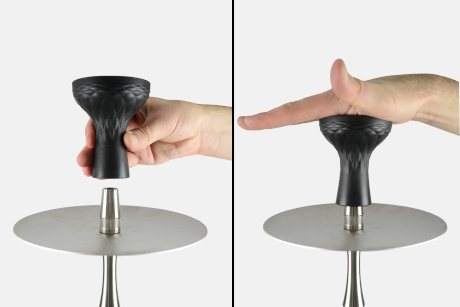

In the photo from left to right: We put the silicone cup on the shaft, cover the cup with the palm of the top and inhale the air through the hose
Brass Screw Bonnet Needle Valves (JN Series)
BUYcatalogue
Characteristics:
| Operating pressure | up to 41.3 bar |
| Temperature | -40 to 148 ° C |
| Flow rate | Up to 0.43 |
| Material | |
| Body material | Brass |
| Seal material | Primary PTFE |
| End connections | |
| A type | Swagelok Tube Fittings ISO NPT |
| The size | 1/8 to 3/8 inches; 6 mm |
Complete leak test
The complete sequence of testing a hookah for leaks:
- We take the hose with a mouthpiece to the lips
- Press our lips tightly against the hole and gently blow inward
- On the other side of the hose, pinch the hole with your finger
- If the hose does not allow air to pass through, then move on.
- Collecting the mine
- We tighten everything tightly
- We close the hole from the bottom at the end of the lower tube and blow into the upper hole of the shaft above the plate
- If everything is tight we move on
- We insert the shaft into the flask and the hose into the shaft using seals
- Close the top hole above the plate
- We simulate the process of smoking, drawing in air, and then blowing out from ourselves
- Everything works correctly if air is blocked during inhalation, and when exhaled, air exits through the open valve
- We put the cup on the shaft through the seal
- Cover the cup tightly with your palm on top
- Breathe in through the hose
- If the center of the palm pulls when inhaling, then the hookah is completely sealed and ready to cook.
The hookah is assembled, sealed, now we turn directly to the cooking process itself.
How important is tightness
Hookah tightness does not have to be 100%. A little extra oxygen compound is a plus in some situations. For example, it helps tobacco not to catch fire quickly with strong and frequent breaths. The stronger and longer the inhalation, the more aggressive the tension on the tobacco leaves or other mixtures. After all, a process occurs in the cup, similar to the one when we blow on coal. The harder we blow, the more the coal reddens and flares up. And the same thing happens with the tobacco inside the cup. The stronger and more often we inhale, the faster it can ignite.
Lever valves (OG, 1G, and 92 series)
BUYcatalogue
Easy and fast on / off regulation.
Characteristics:
| Operating pressure | Up to 20.6 bar |
| Temperature | -28 to 93 ° C |
| Flow rate | Up to 0.70 |
| Material | |
| Body material | 316 stainless steel, brass |
| O-ring stem seal material | Fluorocarbon FKM |
| End connections | |
| A type | Normal pipe thread |
| The size | 1/2 inch |
| Configuration | Straight, oblique, oval |
